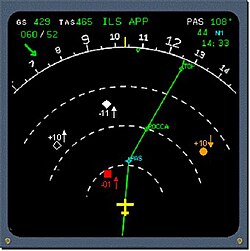A traffic alert and collision avoidance system (TCAS, pronounced /tiːkæs/; TEE-kas) is an aircraft collision avoidance system designed to reduce the incidence of mid-air collision (MAC) between aircraft. It monitors the airspace around an aircraft for other aircraft equipped with a corresponding active transponder, independent of air traffic control, and warns pilots of the presence of other transponder-equipped aircraft which may present a threat of MAC. It is a type of airborne collision avoidance system mandated by the International Civil Aviation Organization to be fitted to all aircraft with a maximum take-off mass (MTOM) of over 5,700 kg (12,600 lb) or authorized to carry more than 19 passengers. CFR 14, Ch I, part 135 requires that TCAS I be installed for aircraft with 10-30 passengers and TCAS II for aircraft with more than 30 passengers. ACAS/TCAS is based on secondary surveillance radar (SSR) transponder signals, but operates independently of ground-based equipment to provide advice to the pilot on potentially conflicting aircraft.

In modern glass cockpit aircraft, the TCAS display may be integrated in the Navigation Display (ND) or Electronic Horizontal Situation Indicator (EHSI).

In older glass cockpit aircraft and those with mechanical instrumentation, an integrated TCAS display including an instantaneous vertical speed indicator (IVSI) may replace the mechanical IVSI, which only indicates the rate at which the aircraft is descending or climbing.